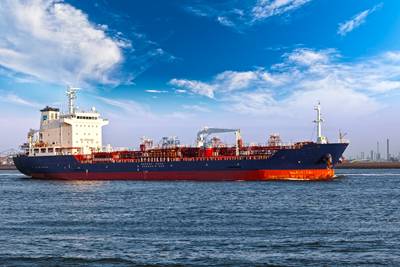By Joseph R. Fonseca | January 26, 2017

Photo Dariusz T. Oczkowicz; AdobeStock
McQuilling Services has released its 20th Anniversary Edition 2017-2021 Tanker Market Outlook. This 200-page report provides a five-year spot and time charter equivalent (TCE) outlook for eight vessel classes across 19 benchmark tanker trades, plus two triangulated trades. Also included in the report is a robust five-year asset price outlook as well as a one and three-year time charter forecast through 2021.
With 20 years of tanker rate forecasting expertise, McQuilling Services is a leader in the industry and continues to support a variety of stakeholders in the energy, maritime and financial services industries with its annual Tanker Market Outlook.
Methodology
The McQuilling Services rate forecast is based on the evaluation of historical and projected tonnage supply and demand fundamentals in the tanker market within the current and projected global economic environment, including oil supply and demand expectations. The forecasting process begins with the development of quantitative models, which are used to measure the correlation between historical freight rates and tanker supply and demand. This fundamental approach has proven to be reasonably predictive over the past 20 years. However, the forecasting process evolves past the modeling stage when the quantitative results are balanced with experiential knowledge and reasonable market assessments.
Key findings from 2017
Between 2015 and 2016, global ton-mile demand to transport crude and residual fuels increased by 4.6%, supported by a 5.6% increase in VLCCs (which accounted for 63% of the total demand for dirty tankers). Suezmax demand accounted for 23% of all DPP demand in 2016, 1% lower than 2015 due to underutilization in West Africa.
We recorded an advancement in the major Middle East > Far East crude oil trade in 2016 by about 5.5% from 2015 levels, while over this year’s five-year forecast, we believe that increasing domestic demand for Middle Eastern crude oil by an expanding regional refining sector may decelerate demand growth to an annualized growth rate of 1.2%.
Clean product ton-mile demand grew by 7.1% in 2016 versus year ago levels. A large supply of refined products in the Middle East and India outpaced demand growth, increasing product exports. Significant volumes of gasoil were witnessed on the Middle East > Northern Europe regional trade, contributing to a 27% rise in CPP ton-mile demand on the route.
Our trade flow analysis indicates that US Gulf CPP exports averaged 7.96 million monthly tons in 2016, up about 0.6% from 2015 levels; however, more interesting is the 4% corresponding increase in ton-mile demand. Ton-mile demand on the US Gulf > East Coast South America trade was up 63% in 2016 due to lower product supply in Brazil as domestic refinery intake declined by approximately 135,000 b/d.
Actual vessel deliveries in 2016 totaled 265 vessels. This was 78 below our expectation given at the start of the year. This represents a slippage rate of approximately 22.7% in deliveries from our original forecast. The slippage can be attributed to yard delays and cancellations from the large orderbooks in previous years, owners altering ship specifications during the construction phase and financing constraints.
Only 31 vessels were removed from the trading fleet in 2016 amid a relatively strong earnings environment and declining steel prices.
Throughout the year, we recorded a total of 134 tankers placed on order, of which 66 were DPP vessels. This is the lowest level of DPP orders since 2012 when 47 vessels were placed on order. Clean product tanker orders numbered 60 in 2016, while just eight chemical MR tankers were ordered, the second lowest level on record.

